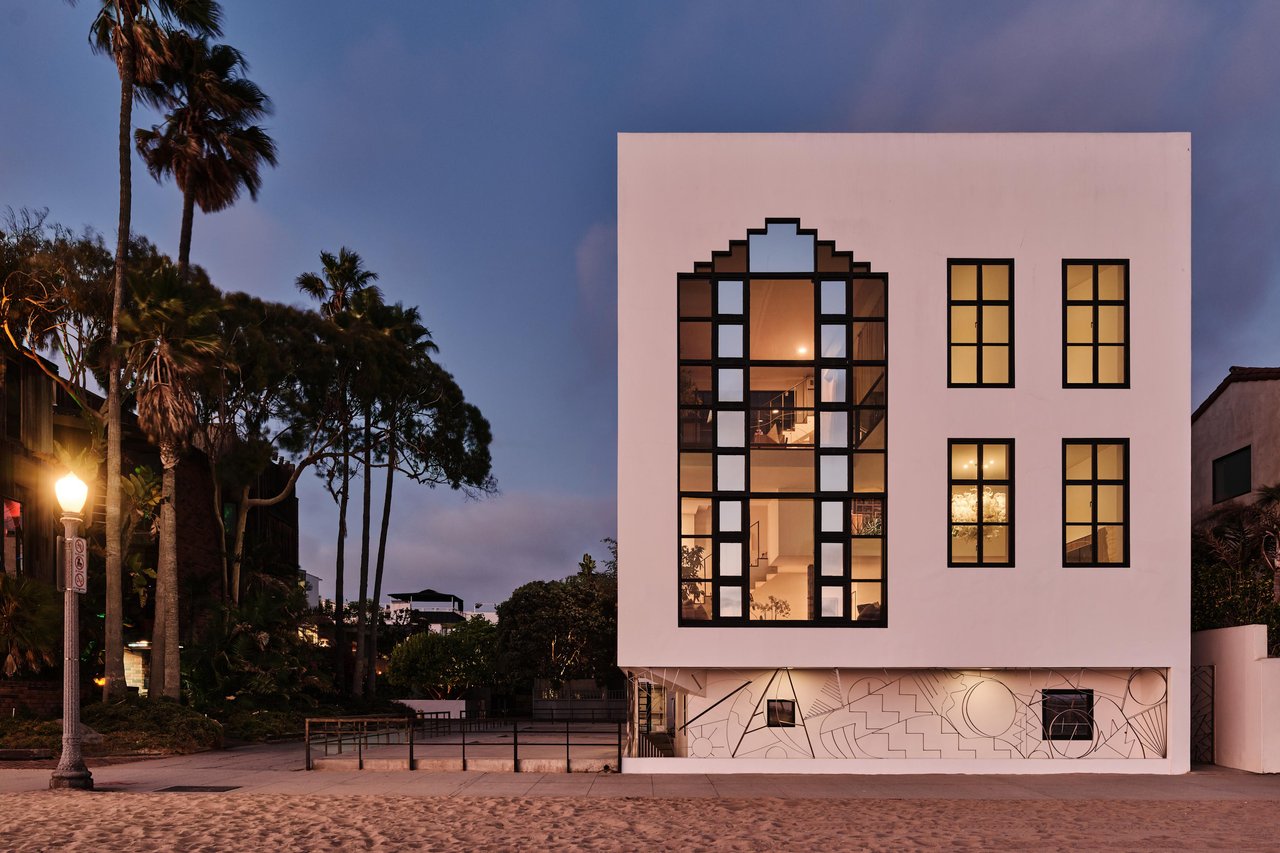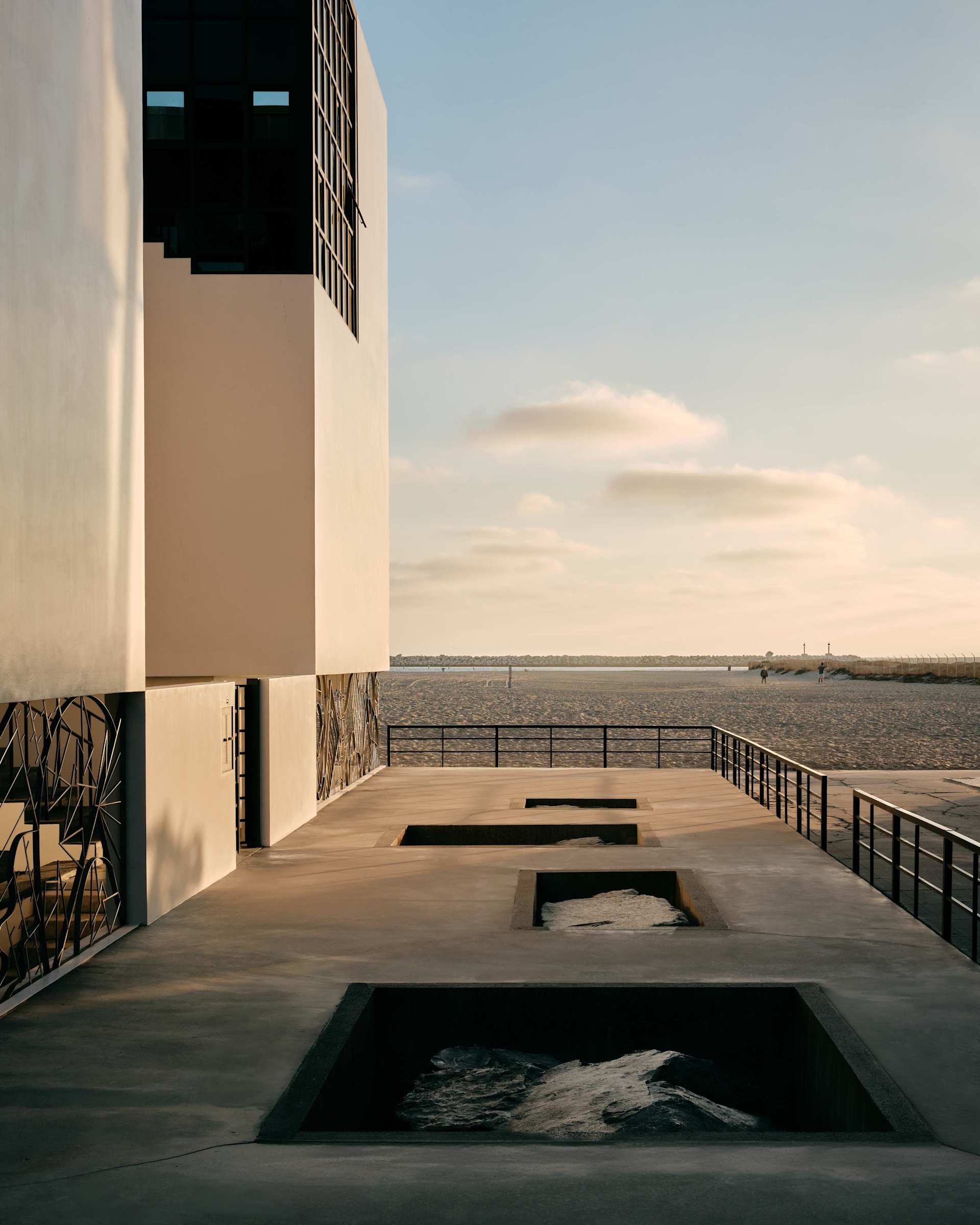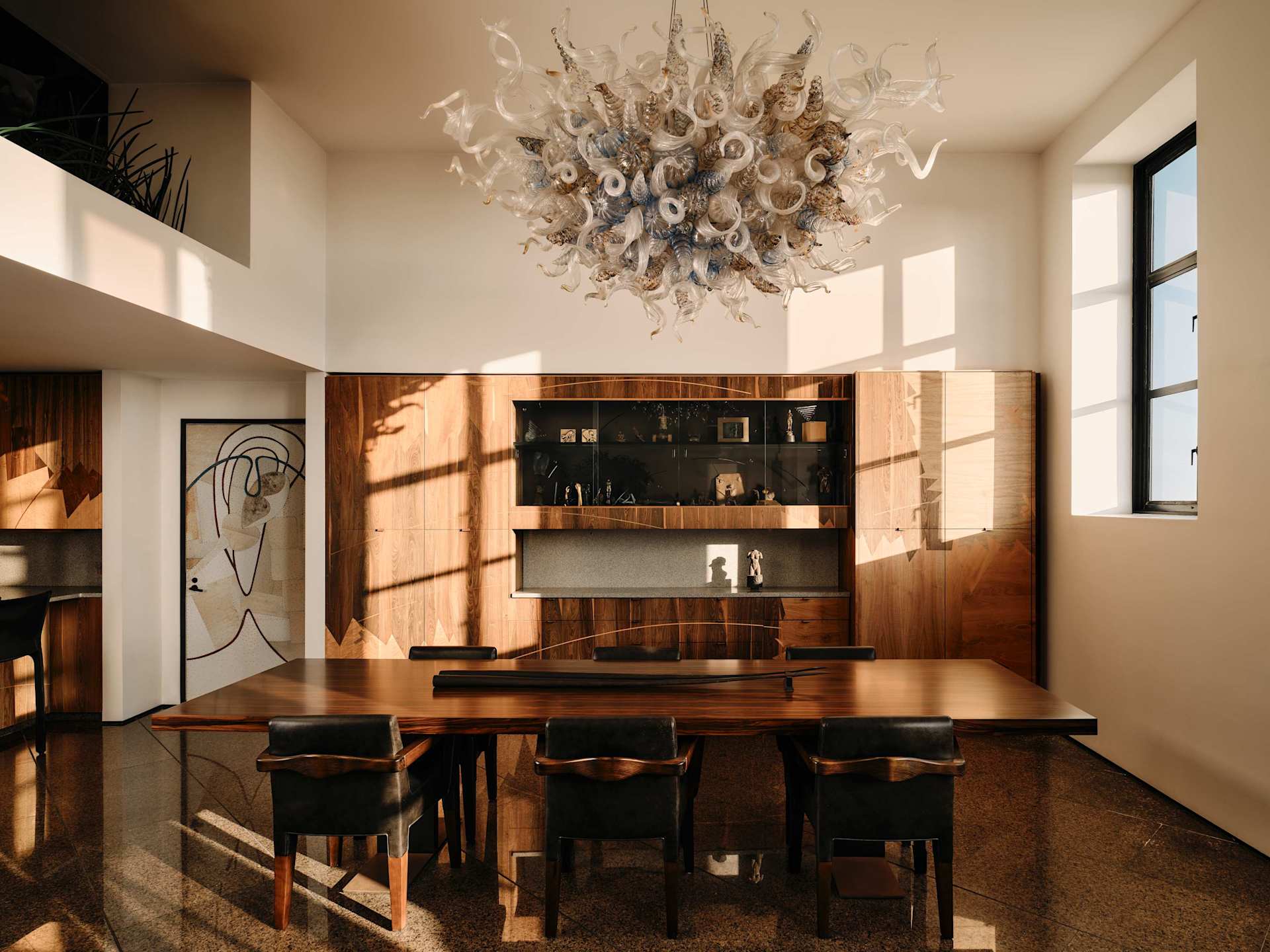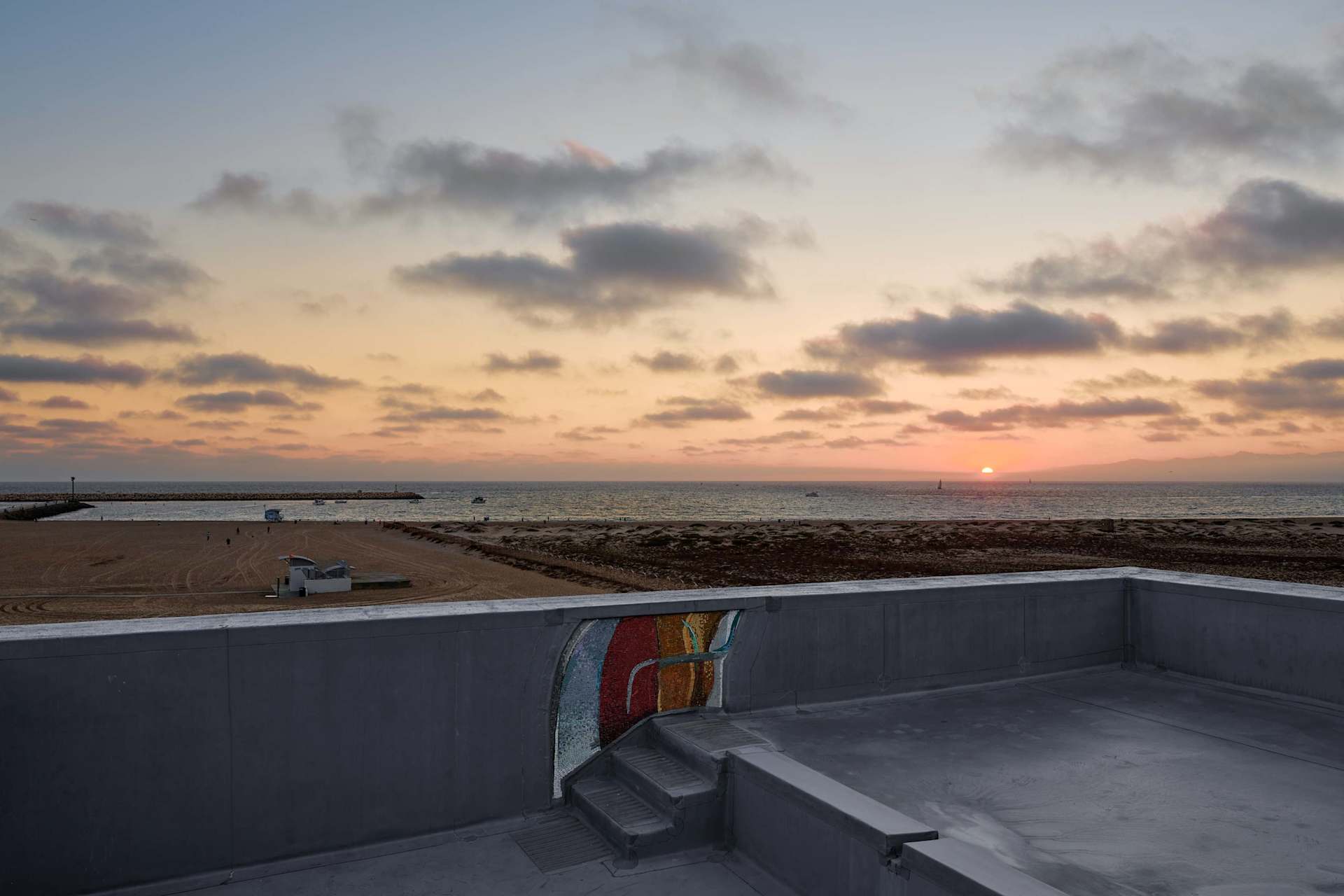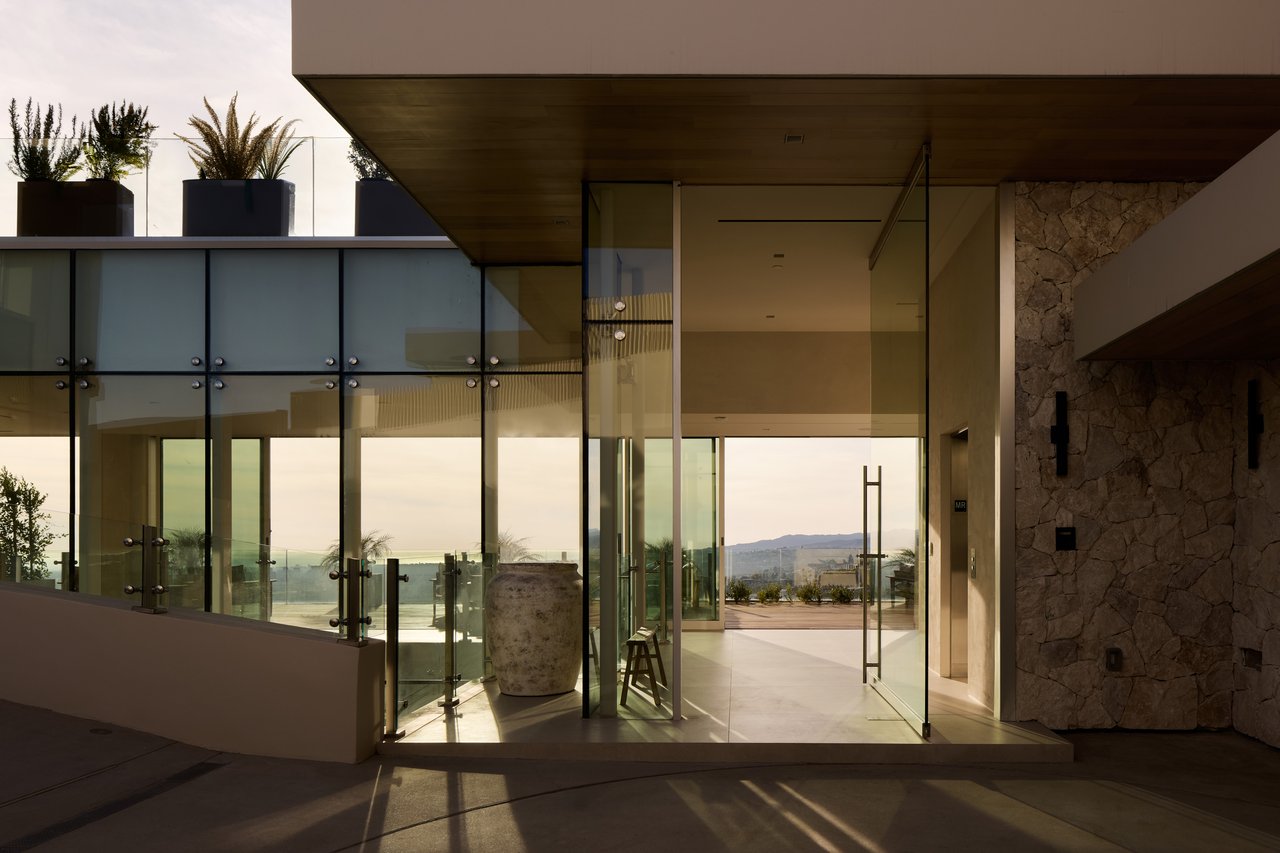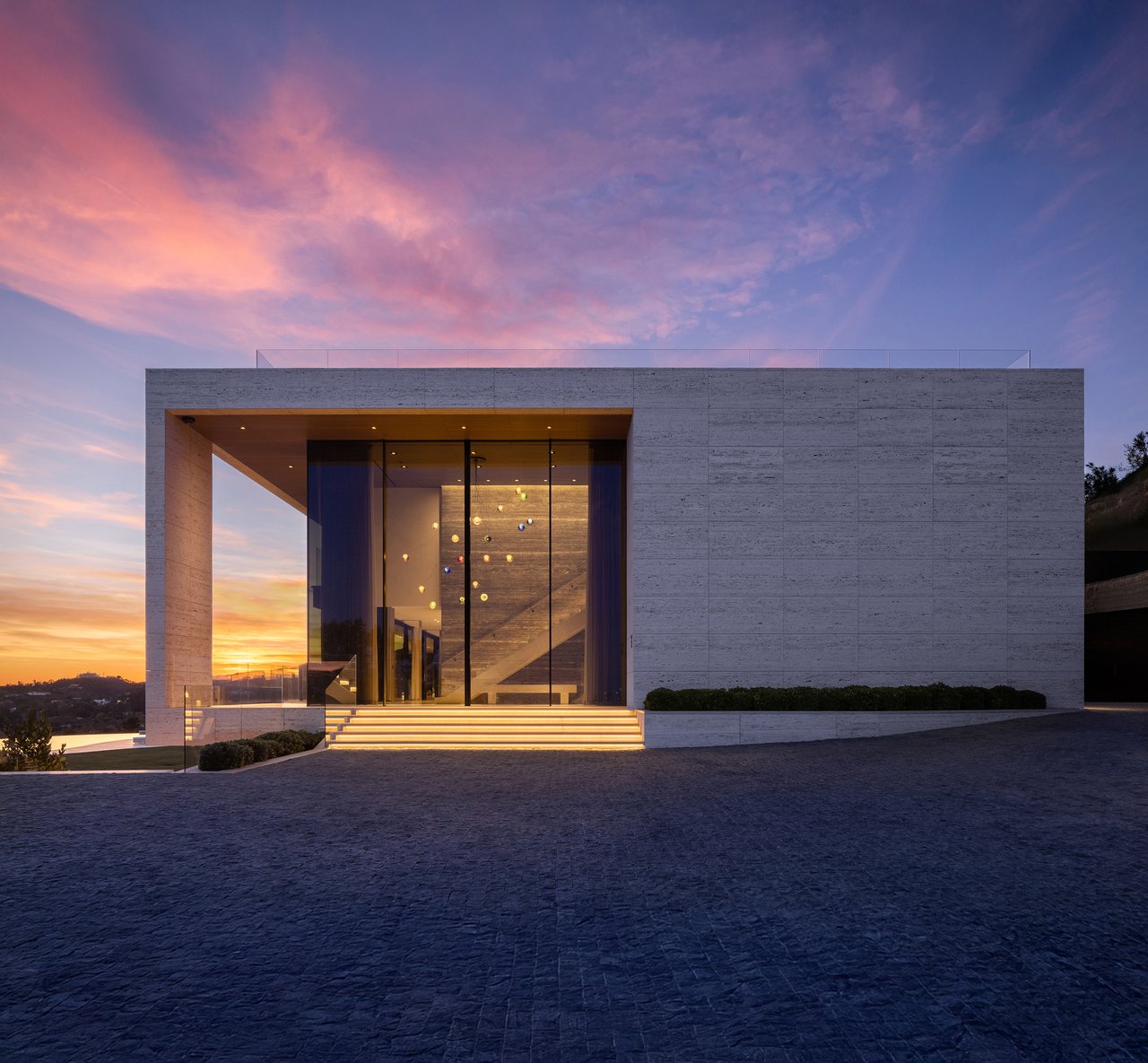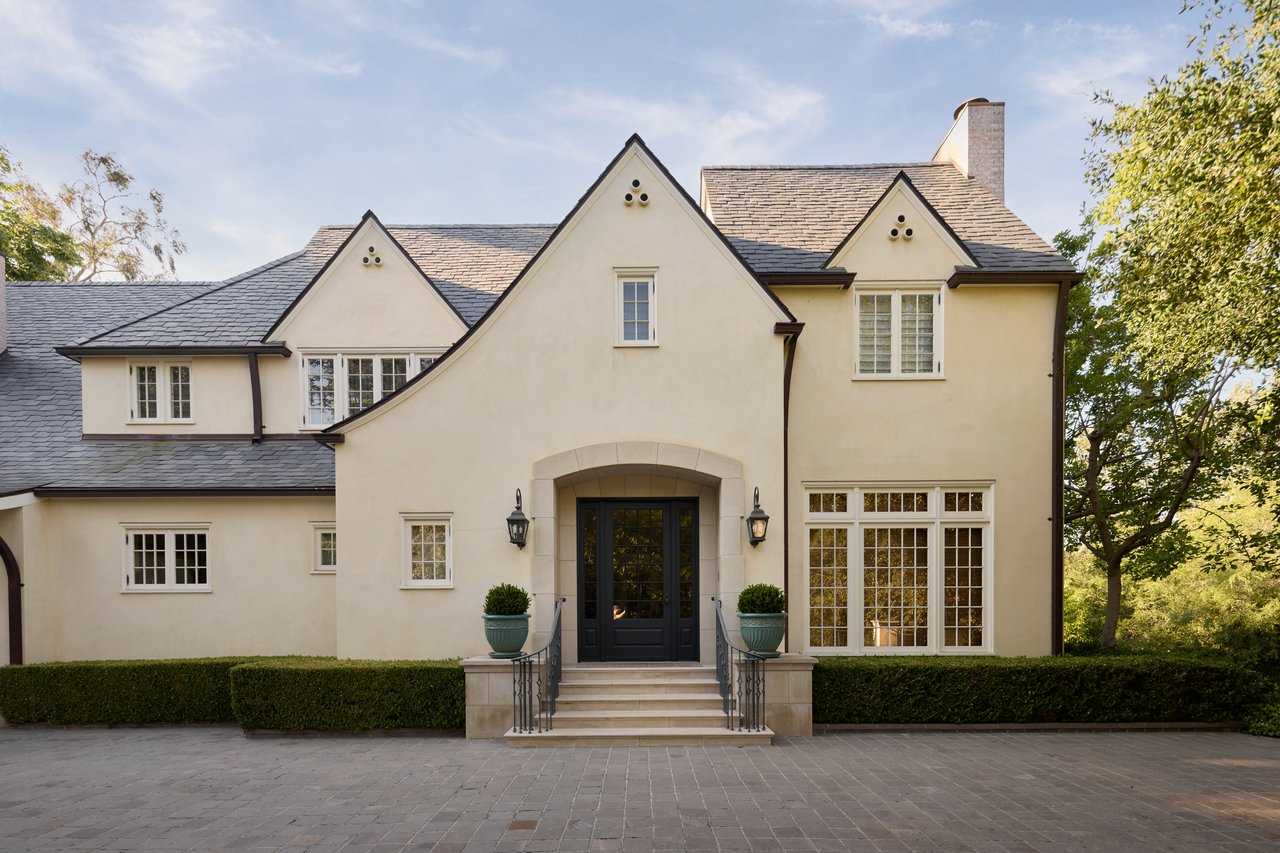One night in the 1970s, art lovers Roy and Carol Doumani met sculptor Robert Graham at a home in Beverly Hills, where his now-famous “Dance Door” piece was being unveiled.
The Doumanis asked Graham if he would create a custom piece for a beachfront home they were planning to build in California. They were shocked and thrilled at his response: Graham asked if he could design the house itself.
“He wanted to eliminate the boundaries between art and craft,” recalled Carol, a novelist who was 27 at the time. “If we were older and world-weary, we’d have been more cautious,” she said, since Graham wasn’t a trained architect. “But in our minds we thought, ‘What an incredible opportunity.”
The contemporary plaster house Graham designed for them in Marina del Rey was completed in 1982. Now, after Roy’s death in 2019, Carol is asking $17.5 million.
The house evokes the artistic spirit of Los Angeles in the 1980s and 1990s, Carol said. The U-shaped, three-bedroom house is roughly 6,600 square feet with two distinct geometric wings framed by black glass windows. Graham enlisted other artists, including painter David Novros and muralist Terry Schoonhoven, to participate in the building process; a few years later, Dale Chihuly designed a chandelier for the dining room.
The house also has an elevator, a lap pool, a lower-level theater and a four-car garage. There are two kitchens: a chef’s kitchen with custom-wood cabinetry and a working kitchen, where Carol liked to cook and bake.
Roy was a financier and UCLA professor. According to property records, he purchased the Marina del Rey land for $121,000 in 1972, before he and Carol were married. After Graham signed on to design the house, the Doumanis enlisted architects and engineers to bring the project to fruition and ensure it was structurally sound. The process, which required 170 tons of plaster, took four years and cost about $2 million, Carol said.
The entryway has stained-glass double doors, designed by Novros, that lead to an open-plan living and dining area anchored by a two-story window. Billy Al Bengston designed Waterford crystal-etched balustrades in a study off the primary bedroom. Abstract painter Ed Moses created a lattice-etched window frame looking out at the beach. Joanna Poussette-Dart did a mosaic wall for the roof deck, and there are two metal-clad doors by Tony Berlant. Graham himself created bronze friezes that are embedded in the walls, as well as stair railings and door moldings, and Eric Orr created a water feature above a skylight in the music room; during the day, as the sun hits the water, it casts a dancing shadow on the wall.
Carol said Graham strongly discouraged them from hanging other art on the home’s walls. “Bob said, ‘Let the patterns the light makes on the walls and floors be the art,’” she recalled. In a similar vein, she said Graham dissuaded her from working with an interior designer who would make the residence look like a picture in a magazine.
Graham later went on to design civic monuments such as the Olympic Gateway at the entrance to the Los Angeles Memorial Coliseum. The sculptor only designed one other home: a house and adjacent studio for himself and his wife, actress Anjelica Huston, in Venice, Calif. He died in 2008.
Even after they moved in, the Doumanis continued to invite artists to create pieces for the home, Carol said. One was Chihuly. “His first instinct was to put a giant, bright red turnip shape over the dining room table,” Carol recalled. “We had to politely say, ‘It’s gorgeous, but we want to eat dinner at this table and we can’t talk through it.’” Chihuly returned with a whimsical design that looked like a treasure dredged from the ocean and was shaped like her husband’s mustache, she said.
Graham was a frequent dinner guest at the Doumanis, and on several occasions, they invited the artists who worked on the house over on Feb. 17—the day they moved in—to celebrate their work. “It was a great privilege to be part of the artists’ creative process,” Carol said.
Over the years, the Doumanis updated kitchen appliances and bathrooms, but didn’t make major changes. About six years ago, the Doumanis commissioned the architect Frank Gehry to design a house across the street for Carol’s former assistant, who Carol said is like a daughter to her. The titanium-clad home is yet another piece of art the couple enjoyed looking at from the vantage point of their home.
The Doumanis have opened the house for public tours at times. In the 1980s they decided to bequeath the property to UCLA upon their deaths, but around 2018, Carol Doumani said they realized a monetary gift to the university was more appropriate.
Carol, now 75, said she has loved living on the beach, but recently decided it is time for a change. Over the years, she said, her relationship to the house has evolved from collaborator and creator to curator, custodian, and caretaker. She would like to live in a city, and she thinks the house deserves new energy to take it into its next chapter.
Located about 20 miles from downtown Los Angeles, Marina del Rey and nearby Venice attract tourists with their galleries, restaurants and beaches, said listing agent Linda May of Carolwood Estates. Beachfront properties typically trade north of $10 million, she said. The Doumani house is on a desirable corner lot with views of the Pacific Ocean and the Marina del Rey channel, where boats make their way into the ocean.
Most of the art is, of course, included in the sale, Carol said—at least “everything that is bolted down.”
Story courtesy of The Wall Street Journal
Represented by Linda May | Marina Del Rey, CA | Asking $17.5M
Photography by Nils Timm
